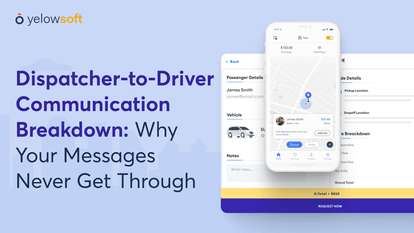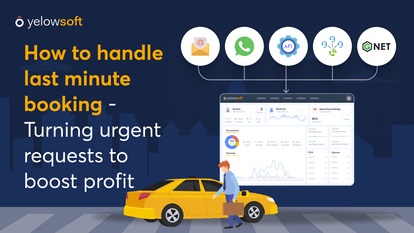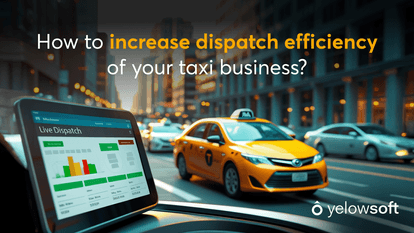Dispatching is integral to fleet management, logistics, and on-demand services such as taxis or delivery services in this fast-paced business world. At its core, dispatch is the engine behind operational control — keeping drivers busy and routes optimized to meet customer demand as effectively as possible.
However, businesses like yours are put in a real fix when it comes to Manual Dispatch or Automation. Given the choice, should they continue utilizing conventional manual dispatch methods or use one of the best software available?
Let’s look at the good and the bad of these two methods, along with how automation can drive significant cost savings and efficiency to businesses regardless of size.
Pros and cons of manual dispatching: weighing efficiency and control
A common trade-off between Manual Dispatch vs. Automation is Control vs. efficiency.
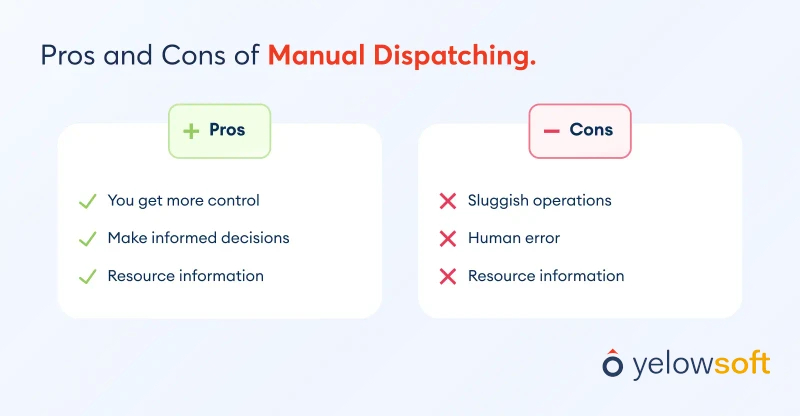
Auto mode enthusiasts might simply claim that you cannot achieve both at once and settle on one or another, but actually, this does not represent a fair argument since there are ways in which multiple people help each other, too!
However, manual dispatching is a good option for some operations as it provides human oversight.
However, it is evident that manual systems have limitations — particularly in the tech-driven world we now find ourselves in.
Benefits of manual dispatching
Most companies are moving toward automated dispatches; however, manual dispatch will always be needed by some businesses that want a higher level of personal oversight and control. The key advantages include:
-
More control: If something unexpected or problematic arises, human dispatchers can change their plan on the fly.
-
Tailored decision-making: Manual dispatchers can consider local knowledge and experience, which may allow for the creation of more Personalized and context-specific routes.
-
Resource information: Dispatchers can pass messages to drivers or field workers in real-time, enhancing trust and reducing confusion during a crisis.
The human touch in manual dispatching
A somewhat tangible and manual dispatching process is still a positive feature in cases that are important for making decisions rapidly, such as taxi services or emergency response.
Take the taxi cab dispatch software, which in manual operation supports matching drivers with passengers based on subjective criteria (e.g., knowledge of area or customer).
On the one hand, this human element can be a plus — we all know how some processes that used to work well with integration automation are better served by having people in double redundancy; that is, having a backup system in place in case the primary system fails.
On the other hand, though, humans mean latency and shapes such as tide pools of data streams crashing together.
Cons of manual dispatching
Manual dispatching, even when effective, has its downside:
-
Sluggish Operation: Dispatchers have to manually monitor drivers, allocate routes, and track compliant operations, which takes time, making the process sluggish.
-
Human error: Dispatch mistakes can cause incorrect assignments, slow responses, and a lack of communication between the dispatchers and drivers.
-
Scalability: You cannot grow out of dispatching services that are done manually as your business grows because, with a larger fleet, you'll find it harder to organize things.
Limitations in route optimization
Route optimization is a challenge for manual dispatching as well. Human dispatchers cannot change routes immediately due to unpredictable road traffic.
In most cases, it will lead to non-optimal routing, longer distances, and increased fuel costs, reducing overall margin.
It is an area where (from many Manual Dispatch vs. Automation comparisons) automated systems outperform based on up-to-the-second data with every ride request they get, regardless of whether the operator ever checks in or at home comfy under blankets.
The role of technology in addressing manual dispatching challenges
However, technological strides, such as route optimization software, have made it easier to streamline everything.
Automated dispatch systems use GPS and telematics data to create the best possible routes on the spot, significantly reducing travel time (and fuel costs).
Incorporating technology in this area has been essential in alleviating many inherent difficulties of dispatching manually, especially for exceptionally large fleets, for which demand can vary drastically.
Advantages of an automated dispatching system: operational efficiency
For many reasons, an automated dispatch system is faster than manual methods. The use of technology helps businesses simplify processes, become more accurate, and eliminate error, which, as a result, increase customer satisfaction.
Here are some of the benefits of automation:
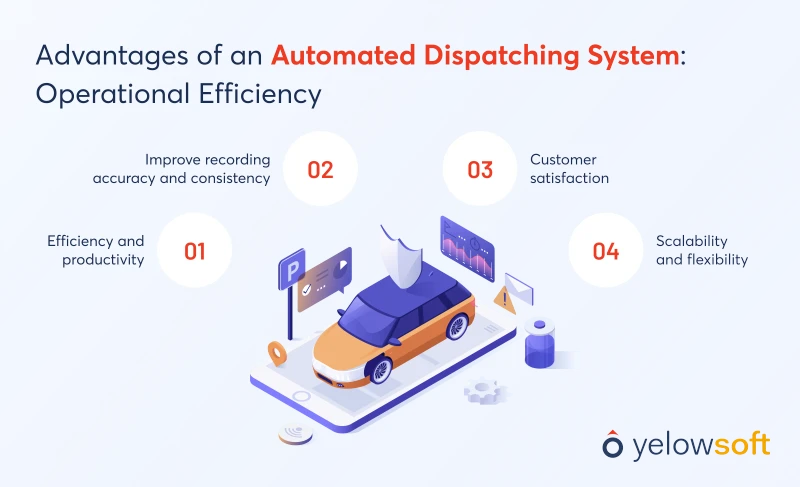
-
Efficiency and productivity: Automation functions facilitate completing dispatch tasks quickly, which enables faster processing of visit details; hence, dispatchers can collaborate on other significant components relating to the fleet.
-
Improve recording accuracy and consistency: Automated systems prevent keying errors, leading to consistent, accurate dispatch.
-
Compliance and regulations: Failing to adhere to industry standards, regulations, and safety guidelines can be costly.
-
Customer satisfaction: Automated systems can give real-time updates to customers, hence resolving their queries quicker and making them satisfied with efficient service paths.
-
Scalability and flexibility: Business automation can scale with your business so that you add more drivers, vehicles, or routes at minimal additional labor costs.
Lowering fuel consumption, reducing labor costs, improved fleet efficiency: these are dollars saved and often the easy ones in terms of ROI on automation.

A Comparison in efficiency: Manual dispatch vs. automated dispatch system
Automation always wins in the war of Manual Dispatch vs. Automation regarding efficiency. The use of automated systems enables the following gains in efficiency.
a. Saving time and resources: Human dispatchers would take considerably longer to do and assign optimal routes or calculate when the vehicles will arrive.
b. Scalability and adaptability of automated systems: Automated systems are also much more scalable and adaptable than any manual dispatch. They can take on higher volume without additional staffing being added.
c. Real-world examples of automated dispatching success: Many businesses implementing the best dispatch software report significant time and cost savings.
For instance, route optimization software has significantly lowered fuel costs and delivery times with logistics companies, with some reporting up to 20% reduction in fuel costs and 30% faster delivery times.
Besides, the following table can provide a complete overview of automation vs. manual dispatch system for your taxi business:
| Feature | Automation | Manual Dispatch |
|---|---|---|
| Efficiency | Faster dispatch times, reduced wait times for passengers, and optimized route planning. | Slower dispatch times, longer wait times for passengers, and less efficient route planning. |
| Accuracy | Minimal errors in dispatching, reduced risk of incorrect assignments. | Higher risk of errors in dispatching, such as incorrect assignments or missed pickups. |
| Scalability | Easily handles increased demand and can scale operations without significant additional manpower. | Struggles to handle increased demand require additional manpower to manage dispatching. |
| Cost | Higher initial investment in technology and software, but long-term cost savings due to increased efficiency and reduced errors. | Lower initial investment but higher long-term costs due to manual labor and potential inefficiencies. |
| Customer Satisfaction | Improved customer satisfaction due to faster service, reduced wait times, and accurate dispatching. | Lower customer satisfaction due to longer wait times, potential errors in dispatching, and less efficient service |
| Data Analysis | Real-time data analysis and insights for optimization, identifying trends and patterns. | Limited data analysis capabilities, making it difficult to identify trends and optimize operations. |
| Flexibility | Can adapt to changing conditions and preferences, such as surge pricing or specific customer requests. | Less flexible, may struggle to adapt to changing conditions or customer preferences. |
| Driver Satisfaction | Improved driver satisfaction due to optimized routes, reduced downtime, and fair dispatching. | Lower driver satisfaction due to inefficient routes, longer wait times, and potential unfair dispatching. |
| Environmental Impact | Reduced environmental impact due to optimized routes and reduced idling. | Higher environmental impact due to less efficient routes and increased idling. |
Manual dispatching: Manual fleet management solution
Manual dispatch has been how fleets have traditionally managed their industry for decades.
A dispatcher accepts a request, sends it to the driver, and waits for him. Unfortunately, this problematic process often leads to miscommunication, delays, and the inability to handle that unexpected change.
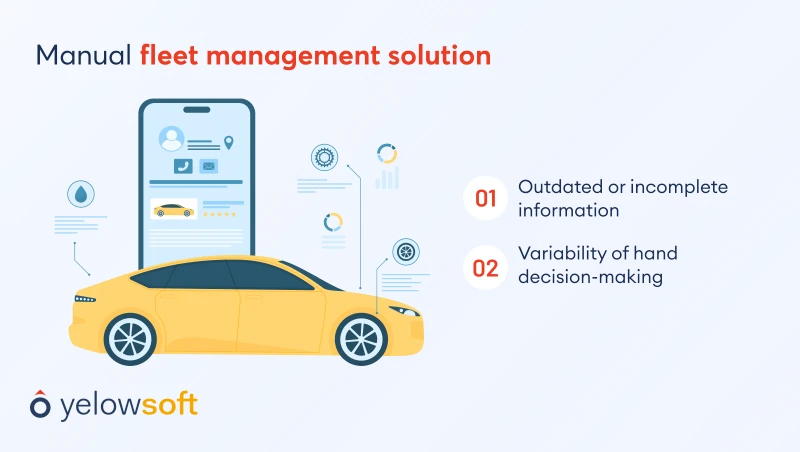
Manual dispatch challenges
Beyond the time and labor needed to dispatch manually, there are several drawbacks for a business:
-
Outdated or incomplete information: Dispatch doesn't have access to real-time GPS tracking and, therefore, receives the locations of drivers from drivers themselves rather than through a telematics system.
-
Variability of hand decision-making: A human dispatcher can tackle the same situation differently depending on their possibility influenced by various factors that lead to inconsistent outcomes.
Exploring automated dispatching: Technology-driven fleet optimization
This model of an automated taxi dispatch system is what the future holds for fleet management. Software platforms that interface with GPS and telematics technology are used to improve operation throughout a fleet of vehicles.
Key functionalities include:
-
Dynamic routes and last mile execution: API integration with GPS for real-time routing based on traffic situations and driver availability.
-
Effective scheduling and dispatching: Automation eliminates busy work, enabling dispatchers to do their best.
Benefits to the fleet operators and customers
Automated dispatch systems will bring advantages to both fleet operators and riders. Route efficiency for fleet operators improves, and orders are delivered more quickly and reliably to customers.
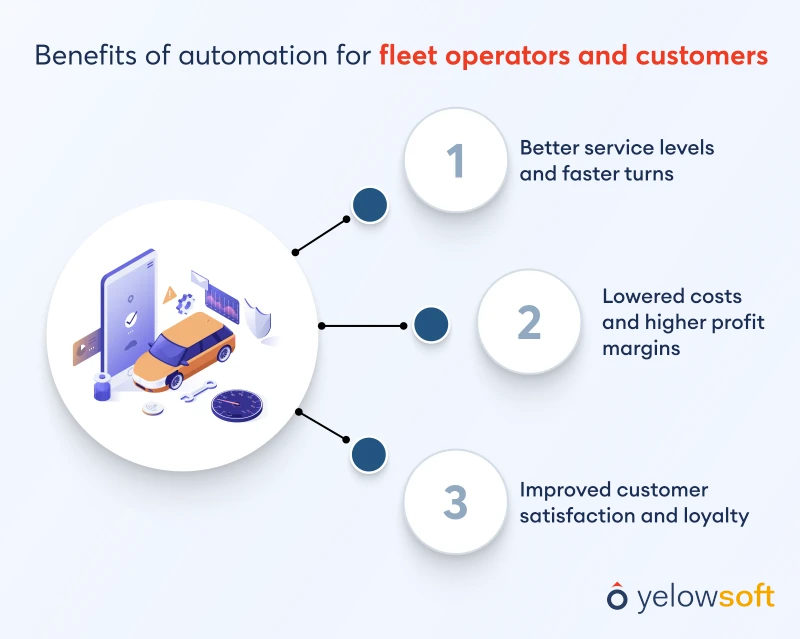
-
Better service levels and faster turns: Automation enables dispatching the driver to be available at the nearest point to your customer, which results in lower turnaround time for customers.
-
Lowered costs and higher profit margins: since the business decreases cycle times, they can save on operational expenses as well as realize more profits.
-
Improved customer satisfaction and loyalty: Customers value the perspective of transparency automation brings about, directly impacting their satisfaction and loyalty.
Choosing the right dispatching method for your business
Considerations for Manual Dispatch vs. Automation certainly, manual dispatching allows maximum flexibility, but automatic methods are far more efficient and can be from small to large scale easily.
- Balancing cost, control, and efficiency
A hybrid approach may be ideal for many businesses, combining some of the manual components with an automated dispatch process. Examples include human dispatchers managing individual high-priority or complicated activities and the automation of routine tasks.
- Using hybrid approach
Hybrid blends the best of both worlds for businesses. However, this has the most immediate benefit in an industry that demands personal touch and tech-driven efficiency.
Conclusion
The Manual Dispatch vs. Automation debate is perennial and a simple conclusion. In all cases, automation dispatching saves you more cost and efficiency for most of the business system.
An efficient dispatching software optimizes daily operations and improves customer satisfaction at a lower operational cost, maintaining that flexibility & control.In the future
of change, companies that do not exploit business automation will fall short as technology advances.
If you manage a taxi fleet, run a delivery service, or coordinate logistics, purchasing the right tools like Taxi Booking Software & best taxi dispatch software will help more than just averting an immediate crisis.


